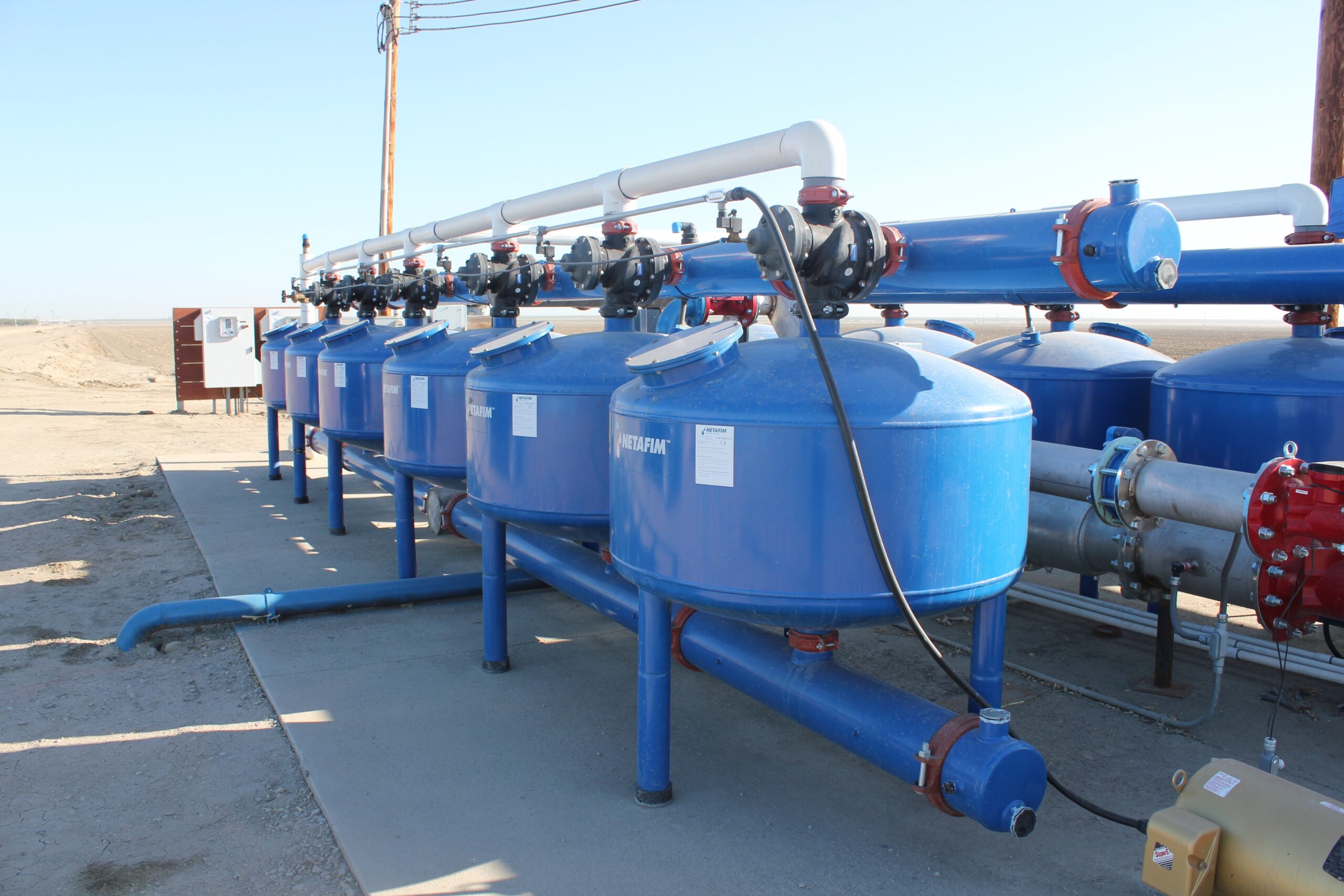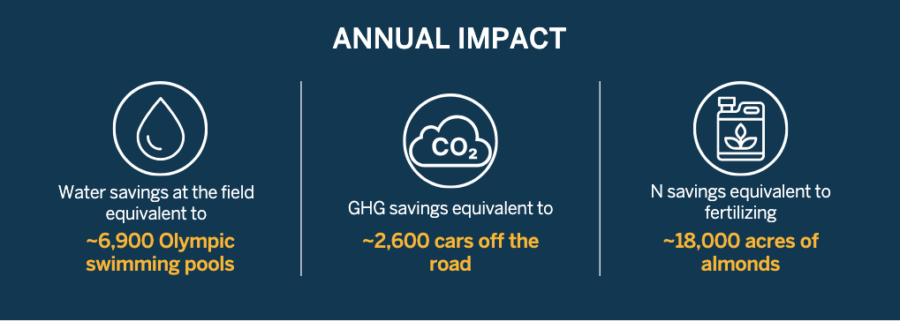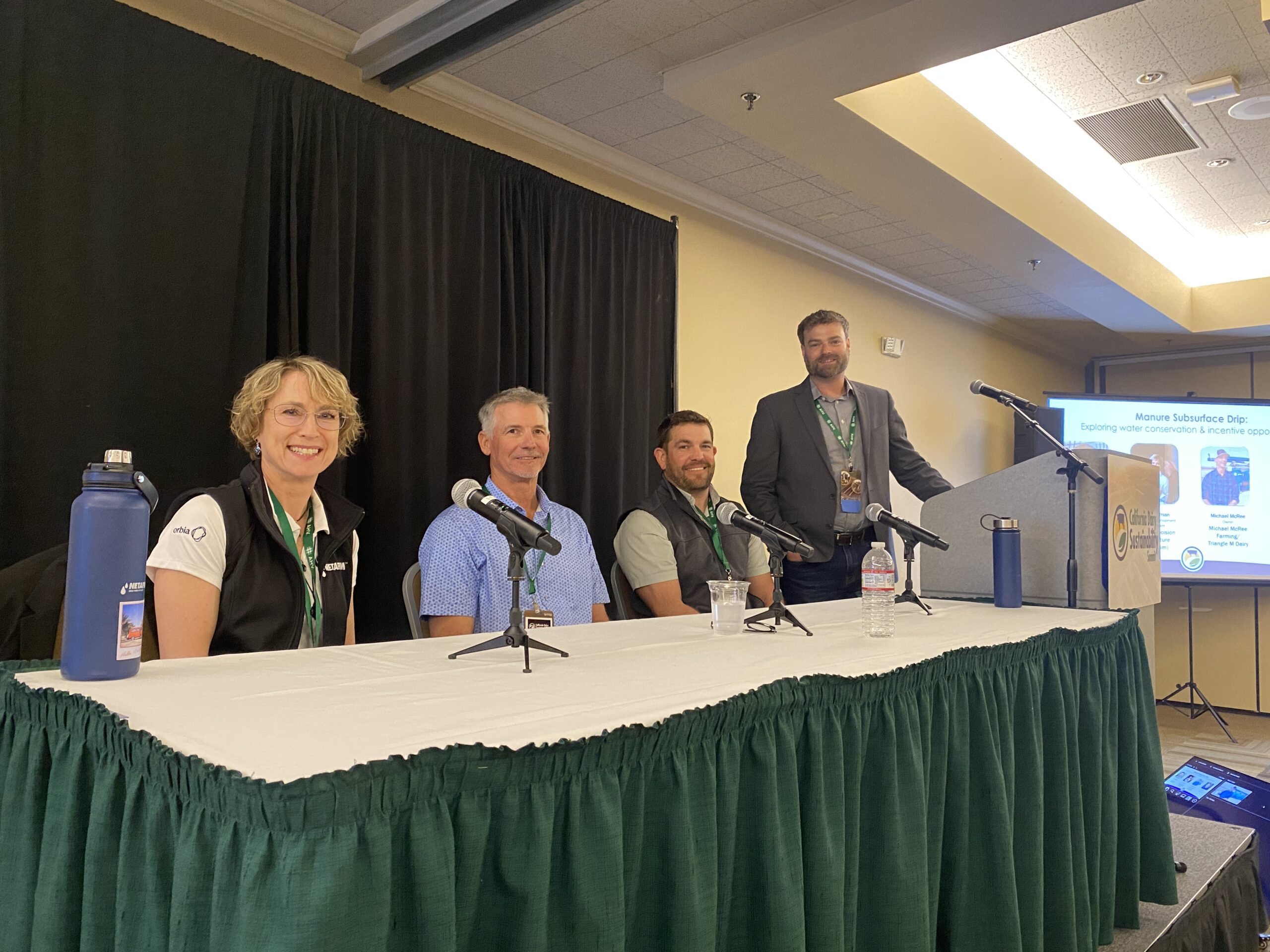
Last week’s California Dairy Sustainability Summit in Visalia, CA showcased promising industry-driven collaborations and promising solutions to water and greenhouse gas emission challenges.
A hopeful and energizing venue, the 2025 Summit was a chance to include more dairy producers in conversation with their industry wide peers and partner organizations. Attendees learned what strategies could work for their dairies right now and what is on the horizon from vendors, researchers, conservation groups, to help inspire smart investments in systemic solutions.
Morning and afternoon panel discussions focused on salient topics like addressing water scarcity, during which David DeGroot and Dr. Thomas Harter dug into dairy water allocations and the exciting potential of groundwater recharge on carefully selected and monitored dairy land to improve local groundwater quality.
Photos left to right:
- Emily Waring, Agricultural Practice Impact Analyst, with Jonathan Avila of Netafim
- Afternoon panelists Val Fishman, Mike McRee and Richie Mayo with moderator Ryan Flaherty
Sustainable Conservation’s Senior Director of Circular Economies Ryan Flaherty moderated a session on the award-winning manure subsurface drip irrigation (MSDI) system featuring Richie Mayo and Michael McRee – two early MSDI adopters – and Val Fishman of Orbia/Netafim. The panel covered MSDI’s positive impact on individual early adopters, its scale to date, and its promise for the future.
Nutrient management technologies that protect our natural resources aren’t one-size-fits-all solutions. Each dairy operation is unique, and investing in the right tech to protect our water quality and reduce greenhouse gas emissions requires a careful assessment of individual operational constraints and opportunities. The panelists presented a comprehensive overview of MSDI’s proven results and suite of available cost-share and corporate funding to aid farmers in making the transition.

The day wrapped with an afternoon session on several exciting manure management technologies in conversation, including the MSDI system, to help dairy farmers understand current and future products or opportunities to help them protect California’s critical water resources.
The MSDI system has the potential to do even more thanks to a new Conservation Innovation Grant from the Natural Resources Conservation Service to test the technology on almonds. Providing dairy producers new nutrient export opportunities and almond growers a source of local alternatives to imported synthetic fertilizer could be a game-changer for local economies.
Sustainable Conservation and our partners continue to pioneer and scale on- and off-farm solutions like MSDI that protect water quality and quantity, farm productivity, and human health. We’re excited to continue sharing the system’s progress as we study its potential and further scale its impact across California agriculture.


